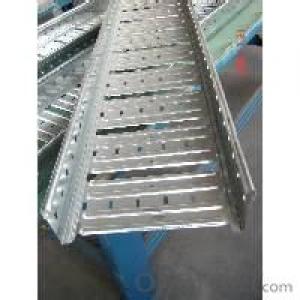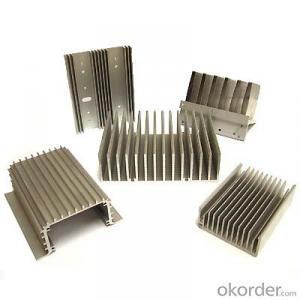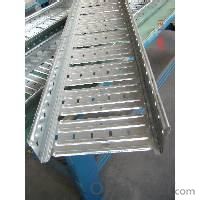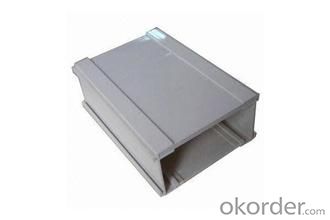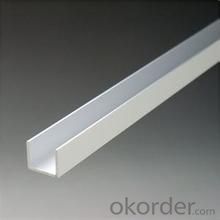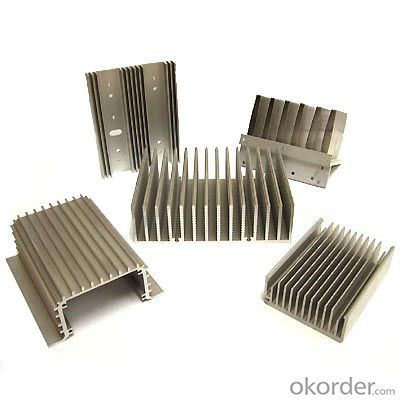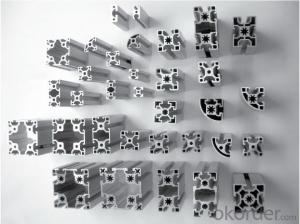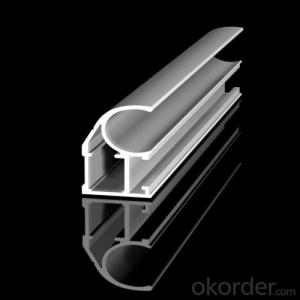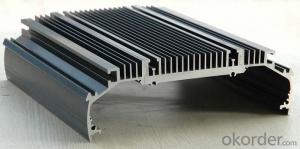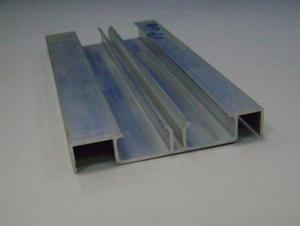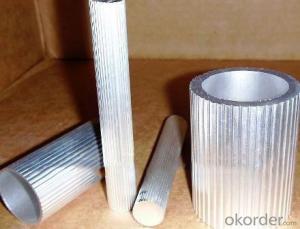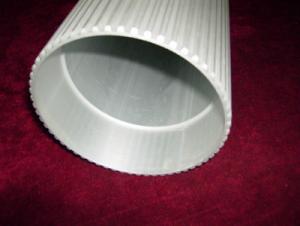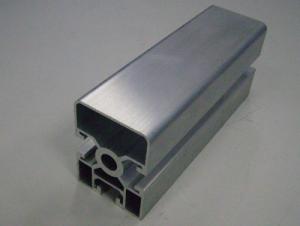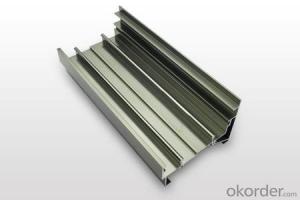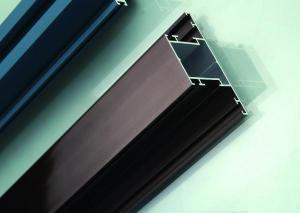Extrusion Aluminum Profiles - Aluminum Frame Aluminum Profile
- Loading Port:
- China Main Port
- Payment Terms:
- TT OR LC
- Min Order Qty:
- -
- Supply Capability:
- -
OKorder Service Pledge
OKorder Financial Service
You Might Also Like
Aluminium profile
1) Alloy: AA6061, AA6063
2) Temper: T5, T6
3) Series of surface treament:
1. Mill Finished
2. Anodizing: Silver, champagne, light bronze, dark bronze, black, light titanium, dark titanium.
3. Electrophoretic Coating: Silver, champagne, bronze, black, light bronze, dark bronze.
4. Electrostatic Color Powder Coating: Normal color, special color.
5. Fluorocarbon Powder Spraying: Normal color, special color.
6. Wood Grain Coating: Import paper, domestic paper.
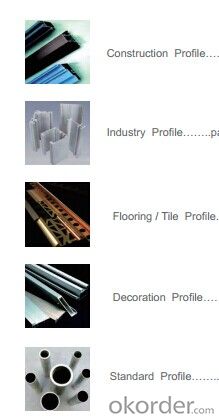
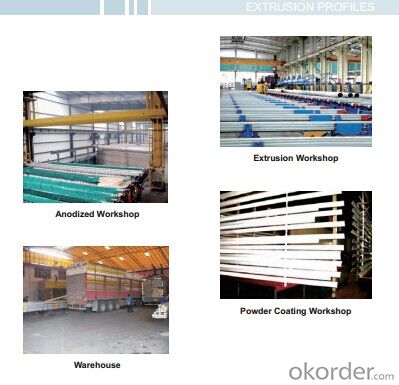
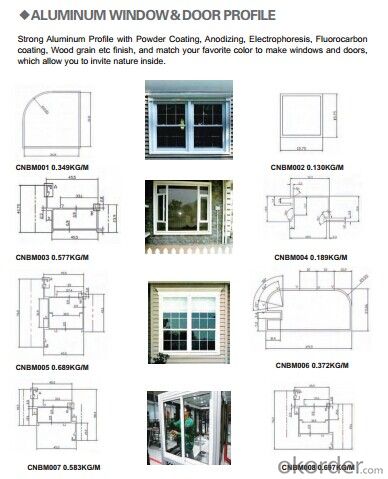
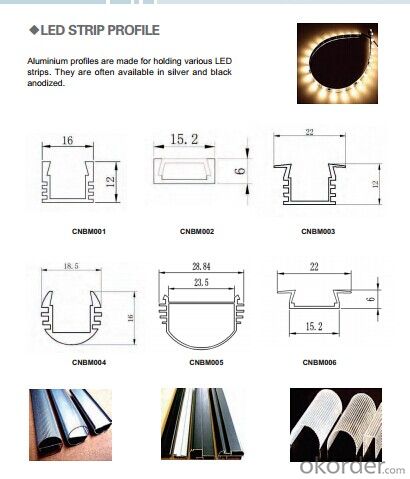
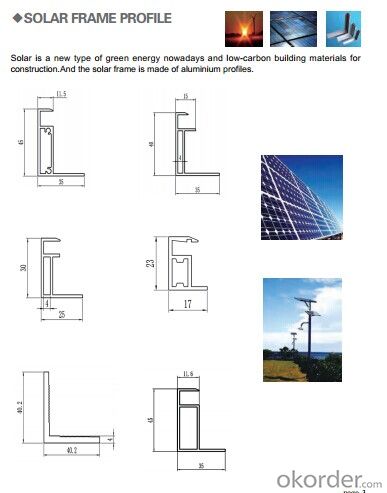
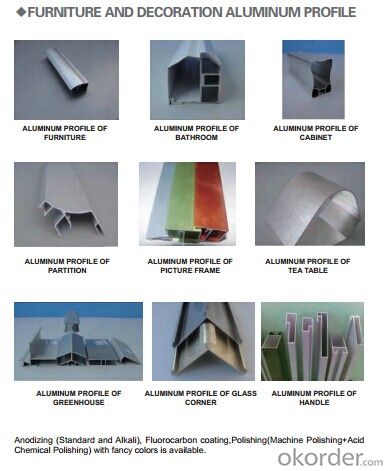
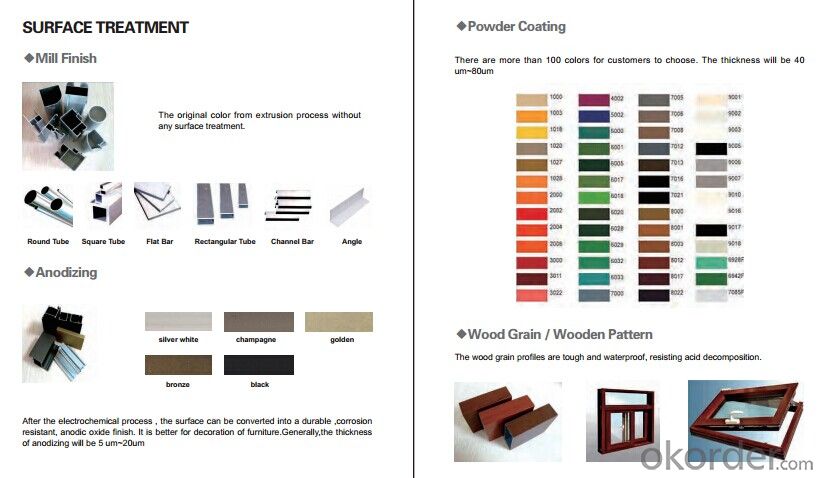
- Q: What are the advantages of using aluminum profiles in the telecommunications infrastructure?
- Using aluminum profiles in the telecommunications infrastructure offers several advantages: 1. Lightweight: Aluminum profiles are much lighter than traditional materials like steel, making them easier to transport and install. This reduces labor costs and deployment time. 2. Resistant to corrosion: Aluminum has excellent resistance to corrosion, making it ideal for outdoor infrastructure exposed to harsh environmental conditions. It can withstand high humidity and exposure to chemicals. 3. High strength-to-weight ratio: Despite being lightweight, aluminum profiles have a high strength-to-weight ratio. This means they can support heavy equipment and structures while still being relatively light. They are perfect for applications such as antenna mounts and support structures. 4. Easy customization: Aluminum profiles can be easily customized to meet specific design requirements. They can be cut, drilled, or shaped to fit unique specifications, allowing for flexibility in design and installation. 5. Cost-effective: Aluminum profiles are generally more cost-effective compared to materials like steel or fiberglass. They require minimal maintenance, have a long lifespan, and can be recycled, reducing overall costs over the infrastructure's life cycle. 6. Electrical conductivity: Aluminum is an excellent conductor of electricity, making it suitable for telecommunications infrastructure where electrical conductivity is important. 7. Aesthetically pleasing: Aluminum profiles have a sleek and modern appearance, enhancing the overall aesthetics of the telecommunications infrastructure. This is particularly important in urban or residential areas where visual appeal is considered. Overall, the use of aluminum profiles in telecommunications infrastructure offers benefits such as lightweight design, corrosion resistance, high strength-to-weight ratio, customization options, cost-effectiveness, electrical conductivity, and aesthetic appeal. These advantages make aluminum profiles the preferred choice for various components within the telecommunications industry.
- Q: Can aluminum profiles be used in agricultural applications?
- Indeed, aluminum profiles find utility in agricultural applications. The strength, durability, and corrosion resistance of aluminum render it a perfect material for diverse agricultural structures and equipment. One can utilize it for constructing greenhouse frames, irrigation systems, grain storage bins, livestock housing, and beyond. Moreover, aluminum profiles possess a lightweight nature, simplifying their handling and installation procedures. Furthermore, their exceptional thermal conductivity facilitates efficient temperature regulation within agricultural settings. On the whole, aluminum profiles present a multitude of advantages and are progressively gaining popularity in the agricultural sector.
- Q: This question asks about the various types of fastening mechanisms used to attach exterior walls to the structural frames of buildings.
- <p>Different types of fasteners used to secure exterior walls to building frames include nails, screws, bolts, and anchors. Nails are commonly used for wood-framed structures, while screws offer greater holding power. Bolts are used in steel or concrete structures and can be either through-bolts or expansion bolts. Anchors, such as masonry or concrete anchors, are used for securing to masonry or concrete walls. Additionally, adhesives and mechanical fasteners like clips and brackets are also used depending on the material and design of the exterior wall and building frame.</p>
- Q: What are the potential effects on the environment when aluminum profiles are used in the construction of buildings?
- <p>The use of aluminum profiles in building construction has both positive and negative environmental impacts. On the positive side, aluminum is lightweight, which reduces the energy required for transportation and can contribute to a building's energy efficiency. It is also recyclable, with a high recycling rate, which helps to conserve resources and reduce waste. However, the production of aluminum is energy-intensive and generates greenhouse gas emissions. Additionally, the extraction of bauxite, the primary source of aluminum, can lead to deforestation and habitat destruction. The environmental impact of using aluminum profiles in construction must therefore be balanced against these factors.</p>
- Q: What are the potential hazards or risks associated with the use of aluminum profiles in construction projects?
- <p>Safety concerns related to using aluminum profiles in construction include potential corrosion due to exposure to harsh weather conditions, risk of electrical conductivity which may lead to electrocution hazards, and the possibility of thermal expansion and contraction causing structural instability. Additionally, improper installation can lead to structural failure, and the lightweight nature of aluminum may not provide sufficient strength in load-bearing applications. It's crucial to ensure proper design, quality materials, and adherence to safety standards to mitigate these risks.</p>
- Q: This question asks if aluminum profiles can be used in cold weather conditions and if they maintain their properties in such environments.
- <p>Yes, aluminum profiles are suitable for use in cold climates. Aluminum is a durable material with excellent resistance to corrosion and weathering, which includes maintaining its integrity in low temperatures. It does not rust or degrade significantly in cold conditions, making it a reliable choice for construction and other applications in cold climates. However, it's important to consider the specific alloy and any protective coatings or treatments that may be necessary to ensure optimal performance in extreme cold.</p>
- Q: How do you join two aluminum profiles together?
- To achieve the desired strength, appearance, and functionality of a joint between two aluminum profiles, there are multiple techniques available. Here are a few commonly employed methods: 1. Utilizing Mechanical Fasteners: One straightforward and widely used approach is to employ mechanical fasteners like screws, bolts, or rivets. These fasteners can be drilled through both profiles and tightened to securely connect them. The selection of the appropriate size and type of fastener should be based on the profiles' thickness and material. 2. Employing Welding: Welding is another popular means of joining aluminum profiles. It involves melting the aluminum at the joint and allowing it to solidify, creating a strong bond between the profiles. Different welding techniques, such as TIG (Tungsten Inert Gas) welding and MIG (Metal Inert Gas) welding, can be utilized depending on the specific application and requirements. 3. Implementing Adhesives: Adhesive bonding provides a non-intrusive method for connecting aluminum profiles. Specially formulated adhesives designed for aluminum bonding can be applied to the profile surfaces and then pressed together. This type of joint is particularly advantageous when a seamless appearance is desired, as it eliminates the need for visible fasteners or welds. However, the strength of the adhesive bond may vary depending on the adhesive type. 4. Employing Interlocking Systems: Certain aluminum profiles are designed with interlocking systems that allow for easy connection. These systems typically involve the use of connectors or accessories specifically designed for the given profiles. They can deliver a secure and sturdy joint while also simplifying the assembly process. When choosing the appropriate method to join two aluminum profiles, it is vital to consider factors such as strength requirements, aesthetics, ease of assembly, and the potential need for disassembly. Additionally, consulting professionals or experts in aluminum fabrication is recommended to ensure the chosen method suits the specific application.
- Q: Can aluminum profiles be used in the construction of greenhouses?
- Yes, aluminum profiles can be used in the construction of greenhouses. Aluminum is a lightweight and durable material, making it an excellent choice for greenhouse construction. It is resistant to corrosion, which is important in a moist and humid environment like a greenhouse. Aluminum profiles can be easily fabricated and assembled, allowing for flexibility in design and construction. Additionally, aluminum is a sustainable material as it is 100% recyclable, making it environmentally friendly for greenhouse construction. Overall, aluminum profiles are a practical and reliable option for building greenhouses.
- Q: Are aluminum profiles suitable for roofing systems?
- Indeed, roofing systems find aluminum profiles to be a suitable option. The lightweight and durable nature of aluminum make it a highly advantageous material for roofing purposes. Its exceptional resistance to corrosion makes it well-suited for different climatic conditions, guaranteeing long-lasting performance. Moreover, aluminum profiles possess remarkable thermal properties by reflecting heat and reducing energy consumption for cooling requirements. Not to mention, aluminum is easily manageable, allowing for adaptable designs and installations. In summary, the strength, durability, and aesthetic allure of aluminum profiles make them a favored selection for roofing systems.
- Q: How do aluminum profiles perform in earthquake-resistant structures?
- Aluminum profiles perform well in earthquake-resistant structures due to their lightweight yet strong properties. They have high strength-to-weight ratio, which helps in reducing the overall weight of the structure while providing sufficient strength to withstand seismic forces. Additionally, aluminum is highly ductile and can absorb a significant amount of energy during an earthquake, thereby reducing the risk of structural failure. Furthermore, aluminum profiles can be easily fabricated and assembled, offering flexibility in design and construction. Overall, aluminum profiles contribute to the resilience and performance of earthquake-resistant structures.
Send your message to us
Extrusion Aluminum Profiles - Aluminum Frame Aluminum Profile
- Loading Port:
- China Main Port
- Payment Terms:
- TT OR LC
- Min Order Qty:
- -
- Supply Capability:
- -
OKorder Service Pledge
OKorder Financial Service
Similar products
Hot products
Hot Searches
Related keywords
